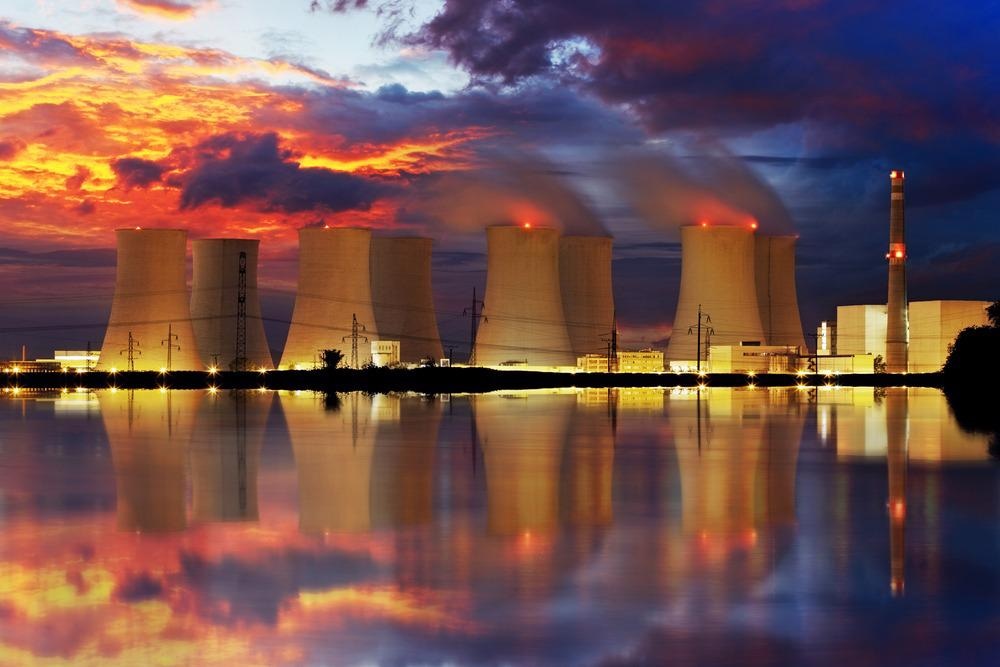
Image Credit: TTstudio/Shutterstock.com
Nuclear technology has caused catastrophic damages as a result of negligence and poor design of nuclear plants. Notable incidents include the Fukushima, Chornobyl, and Three Miles Island accidents. These incidents are some of the reasons for doubts concerning nuclear energy being widely accepted as a renewable energy source.
Nuclear Power as a Source Of Energy
New nuclear technology has the potential to change the outlook of nuclear power. It attempts to address and fix the previous flaws that existed in the past and introduce a new vision for the future of nuclear power. The aim is to ensure increased nuclear fission with a low-carbon energy source. In the US, nuclear energy provides 20% of the electricity supply.
Nuclear power generation has undergone various changes and advances in the last five decades. Additional and improved models of reactor designs are currently being developed worldwide, with compound annual growth rates varying between 2.5% in China and 2.8% in Germany.
Several generations of power reactors have been developed over the past decades. In the 1950s and 1960s, first-generation nuclear reactors were introduced and used to generate electricity commercially.
The last first-generation nuclear reactor was shut down in the United Kingdom in 2015. Generation II nuclear reactors were much more advanced than their predecessors. They were originally designed to have a lifespan between 30-40 years, while some had their lifespans extended to around 80 years. The Chornobyl number four reactor, specifically RBMK-1000 was a Generation II nuclear reactor; the three destroyed reactors in the Fukushima nuclear accident were also Generation II reactors, specifically a boiling water reactor (BWR).
The third-generation reactors are currently the most advanced, with one being in operation since 1996 in Japan. These reactors are simple and smaller, helping to cut down on capital costs as well as being inherently safer and more efficient.
The fourth generation of nuclear reactor designs is still mostly theoretical and is expected to be widely used in the coming years. The suppliers of reactors from Japan, China, Europe, North America, Russia, and elsewhere, have several reactors that have reached advanced stages of either planning or are already under construction, while others are at the research or development stage.
It is estimated that well over 85% of the global nuclear electricity is produced by reactors that were derived from designs originally intended for naval purposes. These nuclear power units as well as other similar ones are safe for use and reliable. Despite this, they are being superseded by much better and improved designs.
Advanced Nuclear Power Reactors
Third-generation reactors have the following characteristics to improve on previous models.
Third-generation nuclear power reactors have a more standardized design for each type of reactor to expedite licensing.
They also have a reduced construction time and initial capital costs. A simple design enables them to be operated easily, while they are less vulnerable to operational malfunctions. They also have a much longer working lifespan of typically 60 years.
Another characteristic of advanced generation reactors is that they have a reduced probability of melted core-induced accidents. Additionally, they typically have a stronger reinforcement against aircraft impacts when compared to previous designs, thereby preventing the radiological release.
These reactors have a higher burn up allowing the full use of fuel and more efficiency. This helps reduce the amount of waste generated with greater use of the burnable absorbers or poisons to extend fuel life.
A notable advancement in nuclear energy has been the design of smaller nuclear reactors. The reactors that were made in the 20th century were much larger and more expensive.
These large nuclear plants could generate enough energy to power millions of homes. The problem was they took decades to build with billions of dollars for capital costs.
A much more modern reactor is the small modular reactor (SMR), which can generate a fraction of energy produced by traditional reactors but at the fraction of the cost. The existing nuclear reactors can produce between 500 megawatts (MW) to 1 gigawatt (GW) of electricity while the SMRs can generate 300 MW.
The benefit of SMRs is that a single reactor can be suitable for much lower energy-consuming projects. For larger energy-consuming projects, more reactors can be added to meet the energy requirements.
Another notable characteristic of advanced nuclear reactors is their safety. Therefore, these nuclear technologies have to ensure safety beyond a reasonable doubt for surrounding locals of the nuclear plant. It is for this reason that the advanced nuclear companies have put it at the top of their agendas for inherent safety features that will prevent calamities experienced in the past from recurring.
The risks that can be associated with nuclear reactors can be categorized into the following three categories. Risk of nuclear fuel falling into wrong hands with the intent to weaponize it, the risk that nuclear plants can fail and explode and release toxic radiation, and thirdly, the waste material left over is likely to pose dangers wherever it might be stored eventually.
To increase safety, the nuclear fuel used in these advanced reactors differs from weapons-grade nuclear fuel as they have a lower concentration of uranium in them.
To avert the risks of disastrous accidents, previous accidents such as Fukushima and Chornobyl have been used as case studies and learning experiences to greatly improve the safety of these nuclear reactors. As a result, the use of fuel that is dissolved in the salt ultimately reduces the risk of melt down completely.
Future Of Nuclear Power
Nuclear power is now on the verge of getting back on the main stage as a renewable source of energy as a result of its potential for continued advancement in nuclear technologies, safety, sizes, and plentiful low carbon emissions source of energy. This could ultimately solve climate-related issues which have been brought about by the continued use of fossil-powered power plants.